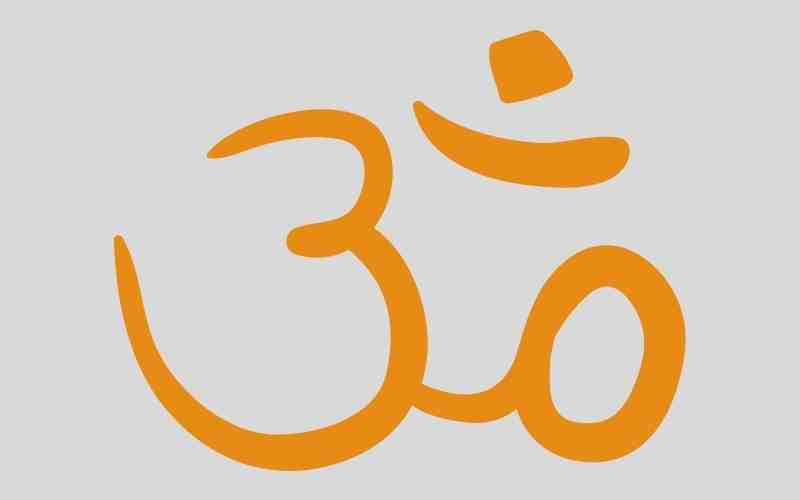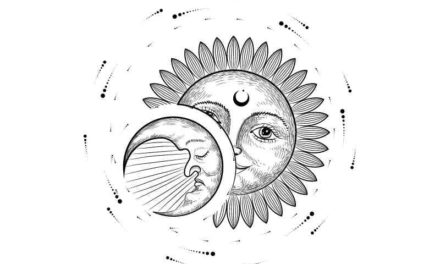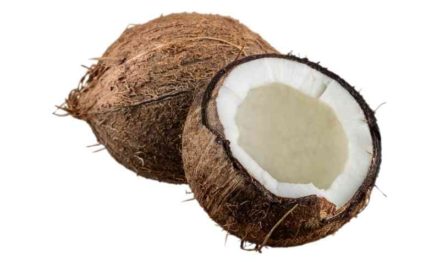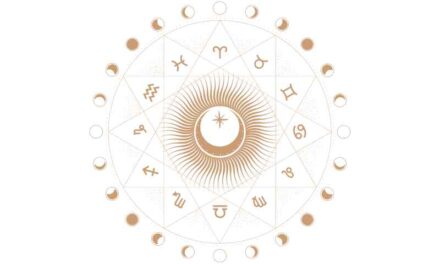Sage Vyasa is widely believed to have written the Brahma Sutras, which are regarded to be his work. It has a total of 555 Sutras (aphorisms). The Upanishads include assertions that seem to be in conflict with one another, and the Sutras are intended to reconcile these claims. Adi Shankara’s comments on the Sutras, known as the “Bhashya,” provide an explanation of the meanings of the texts.
Brahma Sutras, also known as Vedanta Sutras, are exceedingly cryptic and extremely brief comments written in Sanskrit that are intended to serve as pointers or suggestions for understanding the extensive teachings provided in Upanishads (Vedanta) without conflict.
When translated from Sanskrit, the term Sutra means “very brief statement” providing certain information in a nutshell. Sutra may also mean thread or string in another language. In this literature, the knowledge of Brahman (God) or the teachings of Vedanta is strung together like beads on a thread to form a cohesive whole.
The Brahma Sutras are hints or memory aids for those who are studying Vedanta. They cannot be comprehended without the aid of a clear commentary (Bhashya). Further extensive explanation from a qualified Guru/Acharya is also required in order for serious students of scriptures to fully appreciate the subject matter discussed in this commentary.
The Brahma Sutras are also referred to as Uttara Mimamsa in certain circles. Uttara is a slang term for the latter. The Upanishads are the last section of the Vedas. Mimamsa is a Sanskrit term that refers to the examination or inquiry into the related meaning of religious writings.
Brahma Sutras or Vedanta Sutras are very vague and exceedingly brief notes written in Sanskrit to act as points or recommendations for interpreting the complicated teachings in Upanishads (Vedanta) without disputes. The word Sutra in Sanskrit means an extremely short sentence that contains some nutshell details. Within this scripture, the awareness of Brahman (God) or Vedanta’s teachings are put together like beads in a line.
In the analysis of Vedanta, Brahma Sutras are hints or learning helps. We can not be interpreted without a lucid (Bhashya) analysis. The commentary also requires more detailed clarification from a qualified Guru / Acharya for serious scriptural students to understand the subject.
The Uttara Mimamsa is also classified as Brahma Sutras. The latter says Uttara. The latter portion of Vedas was Upanishads. Mimamsa means questioning or inquiring into the related meaning of the holy scriptures.
Taking into consideration the importance of its words, Brahma Sutra is one of Hindu Philosophy’s three main sourcebooks of allegiance to Vedas. The three guide texts are the Upanishads (Vedanta), The Bhagavad Gita and Brahma Sutras and together they are called Prasthanathraya. Upanishads are classified as Shruti Prasthanam (the meaning of Vedic knowledge), and Smriti Prasthanam is regarded as the Bhagavad Gita.
Smritis is the core of original, secondary Vedas wisdom that serves as instruction for practical existence covering dharma shastras (righteousness lessons), Puranas, Itihasas (mythological stories), and basic divine lessons. Brahma Sutras is classified as Nyaya Prasthanam, or Tharka Prasthanam (Vedantas Logical Essence).
Historians claim that the tradition of writing scriptures in the form of Sutras occurred between 400 BCE and 400 CE, and thus the root of Brahma Sutras maybe sometime during this era.
But based on the material of Brahma Sutra, where the doctrines of Buddhism and Jain are also mentioned, several scholars claim it is research performed after the Buddha and Mahavir (Jainism) time. Accordingly, some scholars estimate that some time in 2nd century CE Brahma Sutras was published and some claim 4th Century CE.
The founder of Brahma Sutra was The Rishi Badarayana Vyasa. Vyasa is credited with collecting all four Vedas, as well as composing the great Mahabharata and other Puranas. Yet those scriptures ‘historical era has been much older than the Brahma Sutras time. Because ‘Vyasa’ is treated as a title rather than a name, it is often claimed that the Mahabharata Vyasa (known as Krishna Dvaipayana) is distinct from the Brahma Sutras Vyasa (known as Badarayana).
Brahma Sutras addresses Ontology basically – Origin of Man, Deity, Cosmos, Death, Earth, and their interrelations. It also deals a bit with Eschatology — the possibility of death and after death. The Sutras not only illustrate how the development came from God (Brahman), but also how God himself is part of the made.
The sutras demonstrate that man is fundamentally Atman and implies existence on atman, and how the Atman is connected to Paramatman (God, Brahman). It gives some indications of spiritual activities, particularly meditation. This also provides clues about what happens to average humans at the moment of death and the post-death situation, and whether it varies from the demise of true saints.
All of the notes on the above in Brahma Sutras are essentially focused on the teachings available in Upanishads (Vedanta), particularly on Chandogya Upanishad and Brihadaranyaka Upanishad.
The Sutras often focus on other Hindus Sashtras Mimamsa and Samkhya, as well as on Buddhism and Jainism doctrines to show how Vedanta is distinct from their point of view. Brahma Sutras suggests renunciation as the only way to reach fulfillment. It is also classified as Bikshu Sutra (Bikshu means a renunciate who consumes food through begging).
The Brahma Sutras are in 4 Adhyayas (chapters) and every chapter has 4 Padas (sections). There are many adhikaranas (Topics or Proposals) in each Pada which contain the Sutras. Totally, there are around 555 Sutras, based on the responses on Brahma Sutras from Sri Shankaracharya.
Also in order to understand Brahma Sutras with correct Bhashyams, at least the 12 main Upanishads and Bhagavad Gita must have been learned and properly grasped; a fair introduction to the doctrines of Purva Mimamsa, Nyaya, and Samkhya is also necessary.
Only extremely trained and brilliant Pundits (Brahmins) with a clear comprehension of Sanskrit language and sharp, ardent seekers of spirituality with a desire to attain the highest truth on Brahman (also possessing Sanskrit wisdom) were fit for studying Brahma Sutras in the olden days.
It should be remembered that the Bhashyams were indeed in Sanskrit only and pure knowledge of Sanskrit does not only help to decode the bhashyams as well. The instruction and description of a trained Guru using the bhashyams and correct references to the source texts in Upanishads and other scripts are important.
The same criteria apply to today’s scholars and ardent seekers of core Vedas theory too, save for the fact that they can do well with translations of the originals from Sanskrit into their own languages. In either event, one should never dispense instruction from a trained Guru.
Sri Shankaracharya (788-820 CE) is the earliest known and probably the most credible commentary on Brahma Sutras, and his bhashyam is based on his Advaita theory. In the ensuing years, many other remarks from various Acharyas emerged, giving their interpretations of the specific school of philosophy they professed.
While there are bhasyams published by Sri Bhaskara and Sri Yadava Prakasha (10th & 11th century) focused on Bheda-Abheda theory of thinking, Sri Ramanujacharya (11th/12th century) focused on his school of thought Vishitadvaita, Sri Madhvacharya (13th/14th century) based on his school of philosophy Dvaita, Srikanta (13th century) centered on Saiva Siddhanta and so on.
Down the line of masters ‘disciples (who wrote the initial commentaries), over time, even interpreting the bhashyas was challenging, and on the initial bhashyams required more enlightenment.
Thus came some additional interpretations, published by the latter apostles, to the initial teachings too. The Sutras methodology acted as an efficient method of teaching in a time when the transmission of Vedic knowledge was mainly through word of mouth and not by writing.
But the negative outcome of this approach may be that there was considerable room to lose (in whole or in part) the related teachings with the Sutras, or to misinterpret and modify the initial teachings connected with the Sutras, whereas the Sutras themselves, though short, were memorized and communicated relatively faithfully and were written in palm leaves in the latter times.
In their heart, the initial teachings found in Upanishads are fundamentally non-dualistic (Advaita), which the rishis articulated in poetic form explicitly on the basis of their knowledge.
These also contain metaphors, allegories, and parables that provide room for different interpretations. We have already seen how ambiguous and obscure the basic sense of Sutras is; of course, the sutras combined with allegories in the Upanishads have ample room for various meanings.
The divine insights gained by various acharyas at different historical times and their own convictions of their observations to be more real than the Advaitic understanding of the rishis provided them with the motivation to provide specific interpretations to the sutras.
And even to the claims of the Upanishads; certain claims of Upanishad often vary from a solely Advaita perspective. Added to this is the room necessary for spitting or mixing terms in the Sanskrit language per se to get various definitions.
There is one Total Brahman who is Sat-chit-ananda, with an utterly homogenous type, according to Sri Sankara. This world’s presence is attributed to Maya-Brahman’s illusory force which is neither Sat nor Asat. This is an ideal universe. This universe via Maya is a Vivarta or obvious alteration.
Via Maya Brahman exists as this world. The one truth is Brahman. Via Avidya the human soul has confined itself and associated with the body and other automobiles. He celebrates the rewards of his efforts with his greedy acts. He is the star and entertainer. On behalf of Avidya or the controlling Antahkarana, he sees himself as atomic and as an individual.
When its Avidya is lost, the human soul is identical to Brahman. Jiva is in fact all-pervading and similar to Brahman. Isvara is a Mayan artifact or Saguna Brahman. Isvara’s devotion continues to the Mukti Krama. The holy devotees (Saguna Brahman’s knowers) go to Brahmaloka and attain final liberation via the highest awareness. They are not coming back into this country.
At the end of the process, they achieve the Brahman Nirguna. Nirguna Brahman’s awareness is the only way of deliverance. Nirguna Brahman’s knowers reach absolute final liberation or Sadyomukti. They don’t need to go along the gods’ path or Devayana’s path. The fusion in Para Brahman. They are not going to any Loka or to any planet. Brahman of Sri Sankara is lacking the qualities of the Nirvisesha Brahman (Impersonal Absolute).
Among all the articles, Sankara Bhashya is the newest. This upholds the Upanishads Suddha-Para-Brahman or the Absolute Self as anything equal to all human beings. It propounds a rather provocative theory and firmly asserts that the human spirit is equivalent to the Ultimate Self. The metaphysical view of Sankara precisely reflects Badarayana’s purpose. His interpretations only faithfully make Sri Vyasa’s expected sense. That is beyond question and confusion.
Kevaladvaita School of Philosophy students is expected to learn Sri Sankara’s Sariraka Bhashya which is rich, subtle, and special. This is a source leading to a right interpretation of the Brahma Sutras. This school is made up of the brightest minds from Asia, France, America, and Britain. In philosophy books, it occupies a high level. The Hindus’ most majestic and grandest theory is the Advaita theory.
When you have a mastery of the twelve ancient Upanishads you will appreciate the Brahma Sutras. If you have a knowledge of Sankhya, Nyaya, Meditation, Mimamsa, Vaiseshika Darsana, and Buddhist education, you can understand the second chapter too. Sri Sankara refutes any of those schools here. The highest contribution to Sri Sankara.
“I am Brahman,” the insight that all of these injunctions, as well as all of the other ways of knowing, have their validity until that realization is reached. Because, after the realization of the non-dual Self, which is neither acceptable nor rejectable, there can be no prospect of the maintenance of knowledge-producing methods that have lost their objectives and subjects.
Furthermore, they (the knowers of Brahman) assert that “When the realization of the Existence-Brahman as I occurs, the body, son, and so on get sublated, and as a result, the secondary and false selves cease to exist, how can any action (prompted by injunction and prohibition) be taken?
The Self may exist as a knowing agent prior to the attainment of the entire knowledge of Brahman, which must be sought for; nevertheless, once the search is over, the knowing agent, liberated from the flaw of sin, becomes one with the thing that was discovered through the search.
Similarly, just as the conceptions of the body as the Self are recognized as legitimate postulates by the wise (for empirical dealings), these empirical ways of knowing are regarded as valid until the direct knowledge of the Self dawns.”





